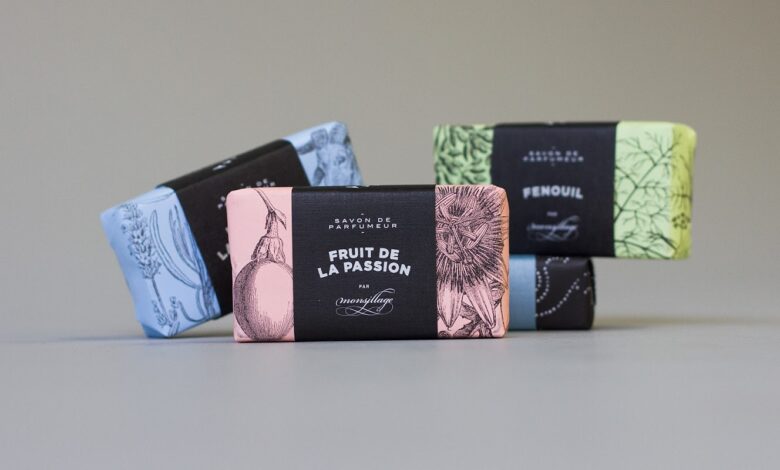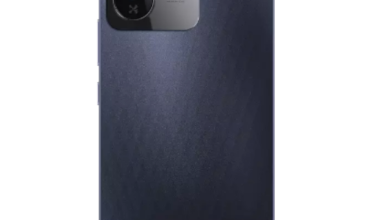Budget-Friendly Custom Soap Packaging Hacks
Order to Get Now Custom Soap Boxes in Wholesale Prices in the USA.

Crafting affordable yet appealing soap packaging is essential for soap makers who want to attract customers without overspending. With a few smart choices and creative techniques, you can design packaging that is both functional and attractive. Let’s explore some natural and organic methods to keep packaging unique, cost-effective, and eco-conscious.
Recycled Paper: An Affordable and Earth-Friendly Option
Recycled paper is one of the easiest and most affordable materials to work with. It is accessible, biodegradable, and gives a natural look to your soap product. You can use old newspapers, paper grocery bags, or unused book pages to wrap your soap bars. This material does not require special tools or expensive machines.
With a little creativity, recycled paper becomes a canvas for simple but beautiful designs. You can stamp your logo using a homemade potato stamp or hand-draw small illustrations to personalize each piece. Adding a string or twine made from hemp or cotton gives the package a more rustic charm.
Recycled paper also absorbs ink well, so if you decide to print your own designs, you’ll get clear and sharp results without needing fancy printers. Plus, the natural look of recycled material connects with the eco-conscious mindset of many buyers today.
You don’t need to buy packaging in bulk or from costly vendors. This approach allows you to reuse what you already have and reduce waste. It’s perfect for small batches or new businesses starting out.
Cost-saving and environmental impact are both excellent reasons to choose this route. People love products that are not just useful but also good for the planet. Recycled paper packaging helps communicate your brand’s values clearly and honestly. Your soap becomes more than a product—it turns into a story.
Kraft Paper Sleeves with Personal Touches
Kraft paper is widely known for its natural brown color and strong texture. It gives off a handmade, earthy feeling that matches well with natural soap products. A sleeve made from kraft paper is very budget-friendly and easy to make.
You can cut kraft paper into strips and wrap them around the soap. The size depends on your soap’s dimensions. Once wrapped, you can secure it with tape, glue, or natural twine. The real beauty comes when you add small personal touches.
Handwritten labels, stamps, or stickers can add a lot of value without adding cost. Use a simple black ink pen or stamp for a professional yet cozy design. You can also create a logo with free online tools and print it on kraft paper using a home printer.
To add a more luxurious feel, try embossing. You can do this at home using affordable embossing kits. A raised logo or name adds texture and makes the packaging feel high-end without being expensive.
Another idea is to dye or color kraft paper using natural dyes like tea, coffee, or beet juice. These dyes create soft shades and unique tones that make every package different. This method helps your product stand out on a shelf or market stall.
Kraft sleeves are not only cheap but also quick to make. They provide enough surface area for branding and important product details. They are also recyclable and biodegradable, which many customers appreciate today.
Fabric Wraps for Reusability and Beauty
Fabric wraps are a great choice if you want to avoid paper altogether. This method draws inspiration from the Japanese Furoshiki wrapping style. You can use scrap fabrics, old clothes, or second-hand scarves to create unique and reusable wraps.
Cotton, linen, and muslin work best for wrapping soap bars. These fabrics are soft, breathable, and easy to fold. They also make your product feel like a gift. A small square of fabric is all you need. Fold it around the soap and tie it with a knot on top.
Fabrics allow for a wide variety of patterns and colors. You can choose ones that reflect your brand identity. This is also a chance to be creative. If you’re into sewing, you can stitch a simple label or tag onto the fabric. If not, safety pins or ribbon can do the job too.
Many customers love the idea of reusing the wrap. They might use it as a cloth, handkerchief, or to wrap another gift. This adds value to your product without costing you much.
You can collect fabrics cheaply or even get them for free from thrift stores or fabric recycling centers. This method makes each package unique and minimizes waste. It also shows that you care about sustainability.
Fabric wraps can be part of your brand’s message. They say your product is natural, handmade, and conscious. And most importantly, they help you stay within budget.
Repurposed Boxes for a Professional Finish
Small cardboard boxes can be reused in creative ways to package your soap bars. You don’t need to buy new ones. Many local stores have small boxes they throw away. Ask if you can take some off their hands. These boxes can be cut, folded, and decorated easily.
You can resize larger boxes or cereal packages to fit your soap. Use templates found online to guide your cuts. Plain brown or white surfaces work best for adding your own branding. A simple paint coat or wrap of paper can cover any printed parts.
Add a label or sticker with your brand name and soap details. You don’t need a fancy printer—handwritten text also gives a personal touch. Natural decorations like dried flowers, small twigs, or pressed leaves glued on top can add an elegant feel.
This packaging style gives your soap a sturdy and polished appearance. It protects the soap well and stacks easily if you sell at markets. Repurposed boxes also keep packaging costs near zero.
Using recycled materials shows that you value sustainability and smart resource use. Customers notice these efforts and often support brands that reduce waste. Boxes allow space to share your story or product benefits without cluttering the design.
Repurposed packaging may take a bit more time but offers big rewards in terms of savings and brand value.
Stamped Tissue Paper for a Gentle Look
Tissue paper may seem too delicate at first, but it can be used beautifully for wrapping soaps. It’s lightweight, flexible, and comes in many soft colors. A stamped design or brand name on tissue paper adds a simple, classy feel.
Buy plain tissue paper in bulk—it’s very inexpensive. Then use rubber stamps to print your logo, ingredients list, or patterns. You can make your own stamps at home using erasers or potatoes. Use water-based ink for a natural look and safe printing.
Once stamped and dried, wrap your soap in a single or double layer of tissue paper. Use natural twine or small stickers to close the wrap. You can also add a thin strip of kraft paper as a label across the center.
Tissue paper makes your product feel light and delicate. It gives off a handmade and careful vibe. When handled properly, it protects the soap from dust and scratches.
This method is perfect for gifting purposes or subscription boxes. You can change the colors depending on seasons or special offers. It’s a low-cost way to refresh your packaging without changing the soap itself.
Using hand-stamped tissue also shows a commitment to handcrafted quality. It’s an easy way to personalize your product, even if you’re making large quantities. Customers enjoy the softness and care of unwrapping something special.
Brown Paper Bags with a Twist
Small brown paper bags are another practical and cost-effective option. They’re easy to find in stores or online and can be bought in bulk at a low price. These bags offer a clean canvas for creativity.
You can customize each bag by printing or stamping your logo. Use natural inks and simple fonts. If you want to make them more eye-catching, punch a design into the paper using hole punches or scissors.
A unique twist is to fold the top of the bag and close it with a clothespin, wax seal, or string. This small detail gives a handmade touch. Adding a sprig of rosemary or lavender under the string creates a natural scent and visual appeal.
Brown bags are lightweight and biodegradable. Also, they are easy to store and fast to prepare. They work well for local markets, pop-up events, or direct customer delivery.
They also allow space for product details like ingredients or care instructions. Stickers made from recycled paper or custom-cut labels can provide this information clearly and neatly.
For those on a tight budget, paper bags offer one of the cheapest and most flexible solutions. They adapt to different themes and are easy to switch up during holidays or special promotions.
DIY Labels for Cost Control and Style
Making your own labels can save a lot of money. It also gives you full control over design and size. You only need basic tools: paper, printer, scissors, and glue. You can also write them by hand for a truly personal touch.
Design labels using free online programs. Choose simple fonts and include only key details like soap type, scent, and ingredients. Print them on recycled paper to keep costs down and maintain a natural look.
You can glue labels directly on kraft sleeves, paper bags, or boxes. Or tie them with string if you’re using fabric wraps. To protect handwritten labels from smudging, brush a little beeswax or glue over the top.
DIY labels allow quick updates when you create a new soap or change ingredients. There’s no need to order new batches from a supplier. This saves time and avoids waste.
A well-made label completes the package and helps your brand stand out. It communicates trust and attention to detail, which buyers love.
Minimalist Design with Natural Elements
You don’t need a lot of color or decoration to make your packaging attractive. A minimalist approach can work wonders. Choose neutral tones, clean lines, and one or two design elements. This keeps the focus on your soap.
Natural additions like dried herbs, cinnamon sticks, or pinecones add texture and interest. They can be tied to the package with twine or placed inside clear wraps. These small touches make the packaging smell nice and look unique.
You can also use small kraft tags with handwritten notes to add a personal message or thank you. Minimalist packaging works well with many design themes and never goes out of style.
This approach saves money by reducing materials used. It also appeals to buyers who prefer clean and simple aesthetics.
In today’s eco-aware world, customers appreciate packaging that is not wasteful. A simple, nature-inspired look makes your product feel genuine and thoughtful.
In all these methods, your creativity plays a big role. Even on a budget, you can build a strong visual identity and connect with your audience through your packaging. Just remember to stay true to your brand and values, and the rest will follow naturally.
Source Link: https://ibexpackaging.com/soap-boxes/



